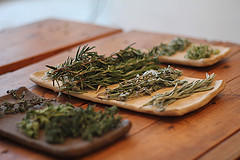Though lavender is a flower, it’s also a deliciously fragrant herb that can be used to add flavor to many sweet and savory dishes. By simply cooking or garnishing with this beautiful flower, you can transform the taste of an entire dish. If you haven’t yet explored the culinary wonders of lavender, these two simple recipes will give you a bit of inspiration.
Lavender Shortbread [Food Network]
Shortbread is known for its rich, crumbly texture and buttery flavor, which makes it a perfect companion for the floral notes of lavender. This recipe uses only six simple ingredients and takes just 50 minutes to make, but after it’s complete your whole home will be filled with the sweet, delicious scent. Simply knead the ingredients together, adding dried or fresh lavender flowers, and bake in the oven until each bar reaches the perfect golden brown.
Pepita and Lavender Brittle [Martha Stewart]
Most brittle candies have a rich, caramel texture, but this particular brittle is uniquely earthy and fragrant. The recipe uses Martha Stewart’s basic brittle recipe to create a crunchy base, while the pepitas, or green hulled pumpkin seeds, offer even more texture. To top it off, dried lavender cooked throughout adds a floral flavor that only the small purple flower can provide.


 Equal Housing Opportunity
Equal Housing Opportunity